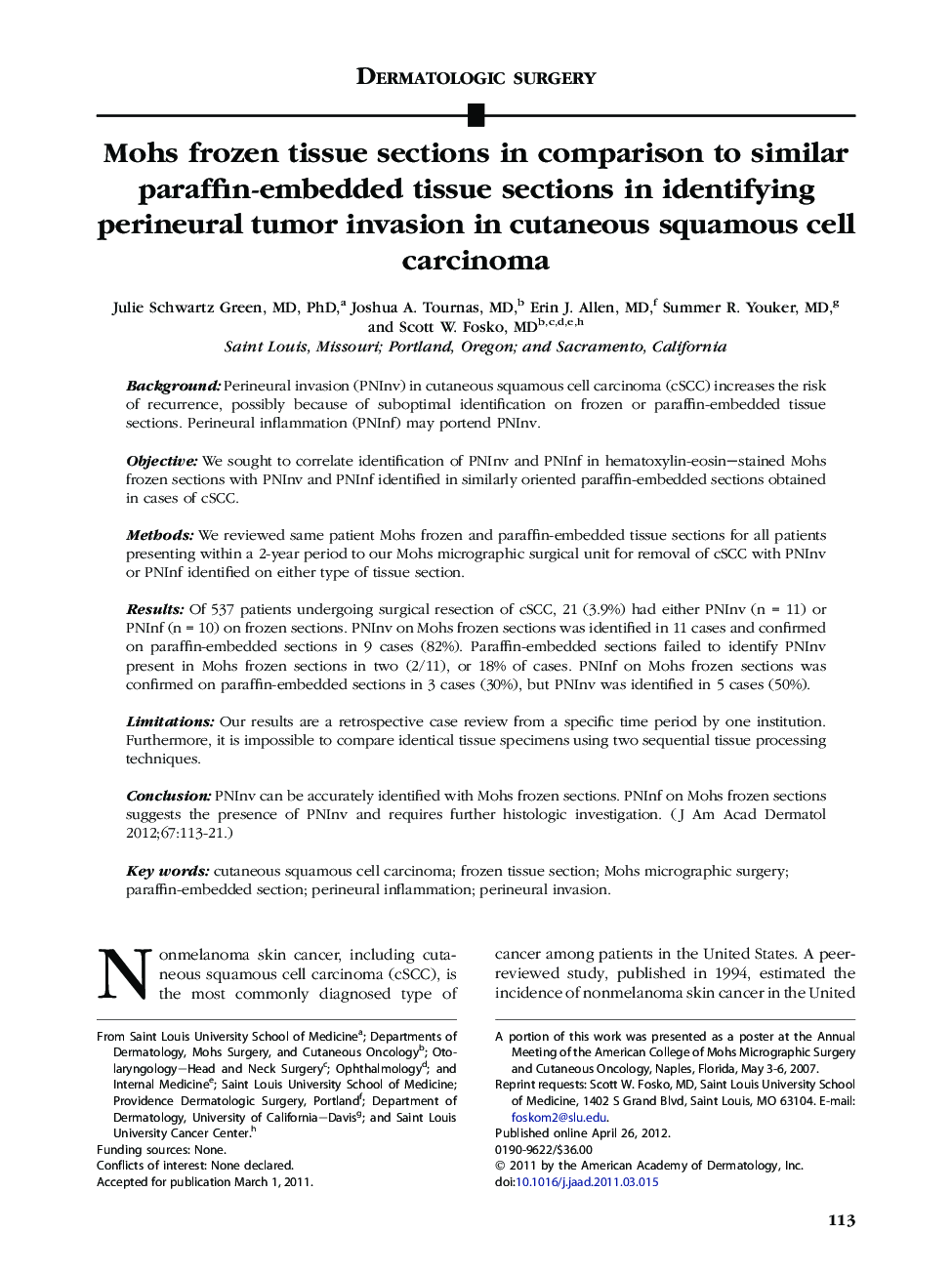| Article ID | Journal | Published Year | Pages | File Type |
|---|---|---|---|---|
| 3206099 | Journal of the American Academy of Dermatology | 2012 | 9 Pages |
BackgroundPerineural invasion (PNInv) in cutaneous squamous cell carcinoma (cSCC) increases the risk of recurrence, possibly because of suboptimal identification on frozen or paraffin-embedded tissue sections. Perineural inflammation (PNInf) may portend PNInv.ObjectiveWe sought to correlate identification of PNInv and PNInf in hematoxylin-eosin–stained Mohs frozen sections with PNInv and PNInf identified in similarly oriented paraffin-embedded sections obtained in cases of cSCC.MethodsWe reviewed same patient Mohs frozen and paraffin-embedded tissue sections for all patients presenting within a 2-year period to our Mohs micrographic surgical unit for removal of cSCC with PNInv or PNInf identified on either type of tissue section.ResultsOf 537 patients undergoing surgical resection of cSCC, 21 (3.9%) had either PNInv (n = 11) or PNInf (n = 10) on frozen sections. PNInv on Mohs frozen sections was identified in 11 cases and confirmed on paraffin-embedded sections in 9 cases (82%). Paraffin-embedded sections failed to identify PNInv present in Mohs frozen sections in two (2/11), or 18% of cases. PNInf on Mohs frozen sections was confirmed on paraffin-embedded sections in 3 cases (30%), but PNInv was identified in 5 cases (50%).LimitationsOur results are a retrospective case review from a specific time period by one institution. Furthermore, it is impossible to compare identical tissue specimens using two sequential tissue processing techniques.ConclusionPNInv can be accurately identified with Mohs frozen sections. PNInf on Mohs frozen sections suggests the presence of PNInv and requires further histologic investigation.
